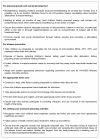The role of community health workers in improving child health programmes in Mali
- PMID: 19903349
- PMCID: PMC2782322
- DOI: 10.1186/1472-698X-9-28
The role of community health workers in improving child health programmes in Mali
Abstract
Background: Mortality of children under the age of five remains one of the most important public health challenges in developing countries. In rural settings, the promotion of household and community health practices through community health workers (CHWs) is among the key strategies to improve child health. The objective of this study was to assess the performance of CHWs in the promotion of basic child heath services in rural Mali.
Methods: A community-based cross-sectional survey was undertaken using multi-stage cluster sampling of wards and villages. Data was collected through questionnaires among 401 child-caregivers and registers of 72 CHWs.
Results: Of 401 households suppose to receive a visit by a CHW, 219 (54.6%; confidence interval 95%; 49.6-59.5) had received at least one visit in the last three months before the survey. The mother is the most important caregiver (97%); high percentage being illiterate. Caregivers treat fever and diarrhoea with the correct regimen in 40% and 11% of cases respectively. Comparative analysis between households with and without CHW visits showed a positive influence of CHWs on family health practices: knowledge on the management of child fever (p = < 0.001), non-utilization of antibiotics in home treatment of diarrhoea (p = 0.003), presence of cloroquine in the household (p = 0.002), presence (p = 0.001) and use (p = < 0.001) of bed nets. A total of 27 (38%) CHWs had not received supervision at all, against 45 (63%) who have been followed regularly each month during the last six months.
Conclusion: Continuous training, transport means, adequate supervision and motivation of CHWs through the introduction of financial incentives and remuneration are among key factors to improve the work of CHWs in rural communities. Poor performance of basic household health practices can be related to irregular supply of drugs and the need of appropriate follow-up by CHWs.
Figures
References
-
- Darmstadt GL, Walker N, Lawn JE, Bhutta ZA, Haws RA, Cousens S. Saving newborn lives in Asia and Africa: cost and impact of phased scale-up of interventions within the continuum of care. Health Policy Plan. 2008;2:101–17. - PubMed
-
- Breman JG, Egan A, Keusch GT. The intolerable burden of malaria: a new look at the numbers. Am J Trop Med Hyg. 2001;64(Suppl 1):iv–vii. - PubMed
LinkOut - more resources
Full Text Sources


